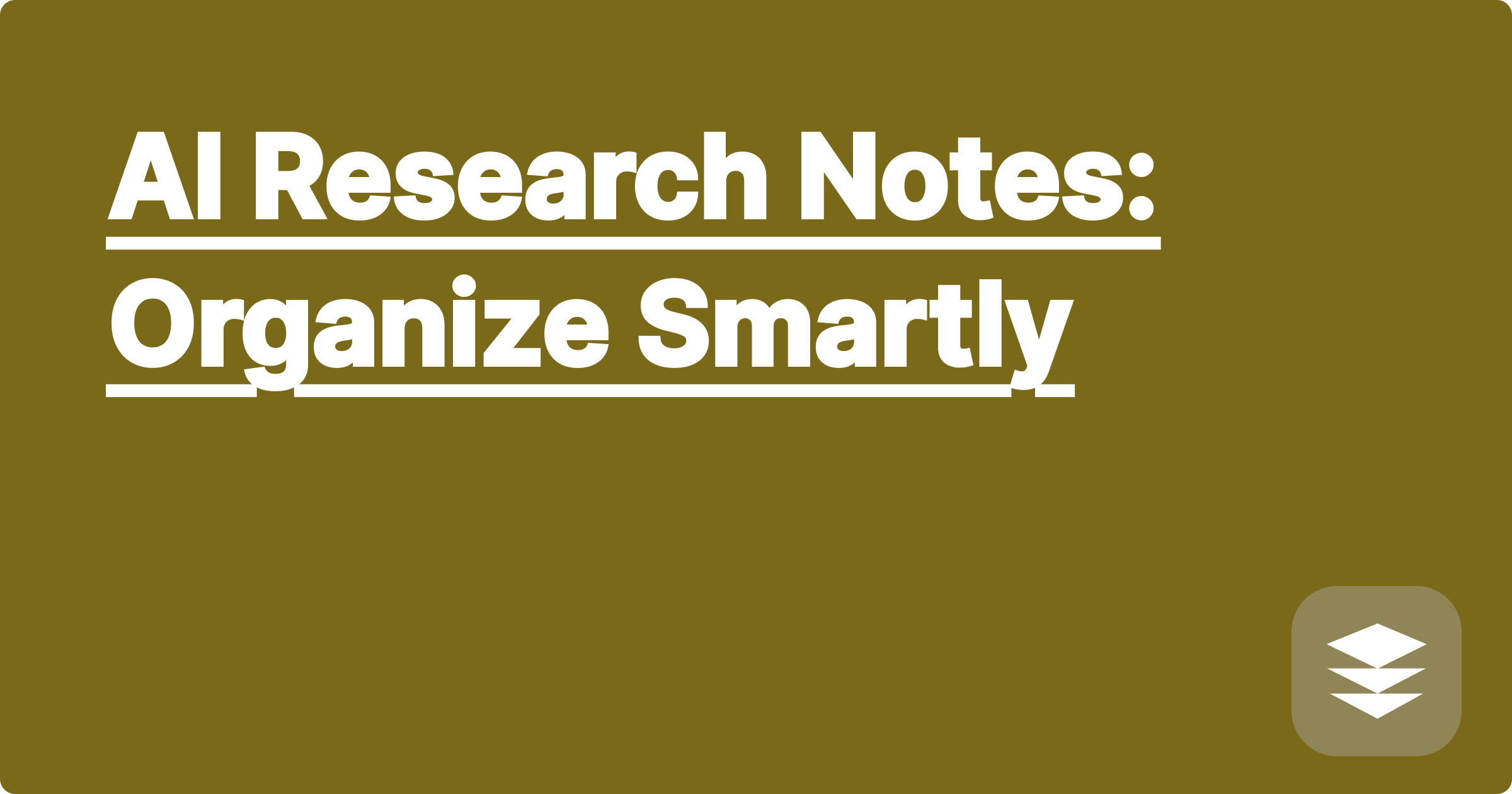
The sheer volume of information encountered by STEM students and researchers can be overwhelming. From complex equations and experimental data to countless research papers and technical documentation, staying organized and efficiently managing knowledge is a constant struggle. This challenge often leads to wasted time searching for information, difficulty synthesizing concepts, and reduced productivity overall. However, the rise of artificial intelligence offers a powerful solution. AI-powered tools can revolutionize how STEM students and researchers organize their notes, analyze data, and ultimately, accelerate their learning and discovery process.
This blog post explores how AI can transform research note-taking and data management, specifically focusing on data analysis and visualization. We'll delve into practical strategies, real-world examples, and step-by-step guidance on leveraging AI tools like a virtual AI partner (we'll call it GPAI, but you can imagine your preferred tool here) to maximize your research efficiency. Whether you're a struggling undergraduate student or a seasoned researcher, this post will equip you with the knowledge and tools to conquer information overload and unlock your full research potential.
STEM fields are inherently data-intensive. Researchers and students constantly grapple with large datasets, complex formulas, and intricate experimental designs. Traditional note-taking methods, such as handwritten notes or basic word processors, often fall short in effectively organizing and analyzing this information. Searching through scattered notes for a specific piece of data can be time-consuming and frustrating. Furthermore, manually visualizing complex data relationships can be challenging and prone to errors. This inefficient information management hinders the research process, slowing down progress and limiting the ability to extract meaningful insights. Imagine spending hours sifting through notebooks only to realize a crucial data point is missing, or struggling to create a clear visualization that accurately represents your findings. These are common pain points that AI can effectively address.
AI-powered tools offer a suite of capabilities to streamline research note organization and data analysis. Tools like GPAI, a hypothetical AI research partner, can act as a centralized hub for all your research materials. Imagine having a virtual assistant that can instantly search your notes, generate summaries, and even suggest connections between different concepts. GPAI can be trained on your specific research area, allowing it to understand the context of your work and provide tailored support. Beyond note organization, AI excels in data analysis and visualization. Tools like ChatGPT, Wolfram Alpha, and specialized data science platforms can process large datasets, identify trends, and generate insightful visualizations in a fraction of the time it would take manually. This allows researchers to focus on interpreting the results and drawing meaningful conclusions, rather than getting bogged down in tedious data manipulation.
Integrating AI into your research workflow can be surprisingly seamless. First, choose an AI partner tool like GPAI or a similar platform that suits your needs. Begin by uploading your existing research notes, data files, and relevant publications. GPAI can then use its natural language processing capabilities to organize this information, creating a searchable database of your research materials. Next, define your research questions and objectives. GPAI can assist in formulating hypotheses and suggest relevant literature based on your existing data. As you conduct experiments or gather new data, feed this information into GPAI. The AI can then analyze this data, identify patterns, and generate visualizations to help you understand the results. Finally, use GPAI to generate reports, presentations, or even sections of your research paper. The AI can synthesize information from your notes and data, creating cohesive narratives that effectively communicate your findings.
Consider a physics student studying the motion of projectiles. They can use GPAI to store their experimental data, including launch angles, velocities, and distances. GPAI can then automatically calculate trajectories, plot the data on graphs, and even compare the results with theoretical predictions. In chemistry, a researcher investigating reaction kinetics can use Wolfram Alpha to analyze complex reaction equations, predict reaction rates, and visualize the energy landscape of the reaction. A biology student studying gene expression can use specialized bioinformatics platforms powered by AI to analyze large genomic datasets, identify differentially expressed genes, and create visual representations of gene networks. These examples demonstrate the versatility of AI in different STEM disciplines.
Using AI effectively in your research requires a strategic approach. First, be clear about your research goals and how AI can help you achieve them. Don't just use AI for the sake of it; identify specific tasks where AI can provide the most value. Second, be mindful of the limitations of AI. While AI tools are powerful, they are not a replacement for critical thinking and human expertise. Always validate the results generated by AI and interpret them in the context of your research. Third, embrace continuous learning. The field of AI is rapidly evolving, so stay updated on the latest tools and techniques. Experiment with different platforms and find what works best for you. Finally, remember that AI is a tool to augment your research, not replace it. Use it wisely and ethically, and you'll unlock a new level of productivity and insight in your STEM journey.
To conclude, incorporating AI into your STEM research workflow can significantly enhance your productivity and accelerate your learning. Start by exploring the available AI tools and identifying those that align with your specific research needs. Experiment with different platforms, learn their strengths and limitations, and gradually integrate them into your daily research routine. By embracing the power of AI, you can transform your research process and unlock new possibilities for discovery and innovation. Don't hesitate to explore the resources mentioned in this post and begin your journey towards AI-powered research excellence today.
AI in Robotics: Efficient Simulations
GPAI: Your AI Study Partner for STEM
AI Research Notes: Organize Smartly
Ace STEM Exams: AI Study Partner
AI in CAD: Design Smarter, Faster
AI for Chemistry: Equation Ace
AI for Biology: Data Visualization
AI for Simulations: Optimize Results